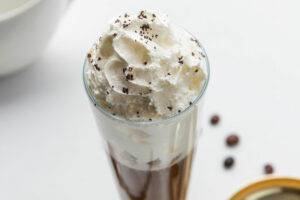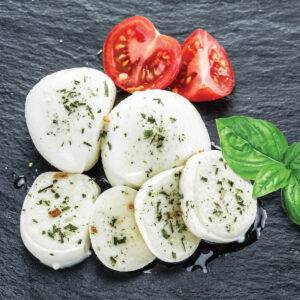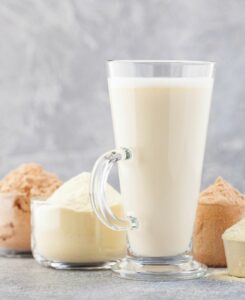Milk’s organoleptic properties combined with its healthy halo make dairy products a desirable ingredient in all types of foods. Formulators seeking dairy flavor profiles not only formulate with the “real” thing in order to make claims such as “made with cheddar cheese” or “contains real milk,” they will often include dairy ingredients designed to provide a boost of dairy top notes. Sometimes such dairy derived flavors are even used in applications where dairy is not a characterizing flavor, but without the dairy ingredient, the overall flavor does not taste complete.

The ingredients likely would not be consumed alone, as their concentrated sensory profile may be overwhelming. When used in food products, they deliver either very distinguishable flavor profiles, such as buttery, creamy and cheesy, or provide subtle dairy notes, including astringency, moldy or pungent.
Varied flavor forms
Dairy-derived flavors are as varied as their applications. They may be liquids, powders, pastes or slurries. Sometimes they appear on ingredient statements as “flavor,” while other times the flavoring may include dried whole dairy products, such as yogurt, and may be labeled on ingredient statements as “yogurt powder.”
Highly concentrated liquid or dried flavors are the form that least resembles the dairy product from which it is derived. They are created through manipulation of chemicals (natural or synthetic) identified on the Flavor and Extract Manufacturers Association (FEMA) Generally Recognized as Safe (GRAS) list. They are considered natural when made using compounds derived via distillation from real dairy foods.
“We offer a dairy-derived natural Monterey Jack-type flavor that is a kosher dairy powder,” said Laura Enriquez, vice-president of research and development-applications for Edlong Dairy Flavors, Elk Grove Village, Ill. “It matches the flavor profile of Monterey Jack cheese at a fraction of the usage level of real cheese. Our kosher dairy natural feta-type flavor matches the profile of real feta cheese. Both flavors give formulators the ability to significantly reduce dairy commodity costs for specialty cheeses that are often quite expensive and difficult to source without any sacrifice in authentic flavor.”

Ms. Enriquez added that Edlong’s natural baked mozzarella-type flavor may contribute processing notes to an application without the expense of heat treatment. She said another benefit to all of the flavors is the dairy identity may appear on the ingredient statement, which may be particularly important on a clean label.
Edlong recently introduced a natural yogurt-type liquid flavor that has a sweet, creamy and milky profile. It may be used to offset the bitterness and high cost of Greek yogurt when Greek yogurt is the base in products such as dips, salad dressings, sauces and smoothies.
The application levels of flavor extracts depend on several factors, including processing, interaction with other ingredients in the formulation and desired profile.
“For example, a frozen cheese sauce will require a different level of baked mozzarella flavor than that same sauce if it is retorted,” Ms. Enriquez said.
Depending on the application, many times a combination of dairy flavor profiles works best.
“There is no single drop-in solution,” said Karen Grenus, senior food scientist with Edlong. “Flavors can be used and combined based on the specific application parameters for each individual food.”
Dairy flavors are offered in concentrations that deliver more flavor than traditional dairy commodities, enabling both lower usage levels and reduced formulating cost-in-use.
“Concentrated dairy flavors can be used at approximately 0.1% to 1% in a formulation,” Ms. Grenus said. “Dairy commodities, on the other hand, can range from 10% to 40%.
“Dairy flavors also have a longer shelf life than dairy commodities, many times do not require refrigerated storage as commodities would, and can help manage the volatility of dairy markets. In addition, concentrated dairy flavors allow the developer to create a profile that is unique to that product and not easily duplicated.”
Rick Schultz, vice-president of strategic development at Edlong, said, “Very few ingredients can supply masking, mouthfeel and great taste all in one delivery system, which is why dairy flavors make so much sense for better-for-you formulations. For example, milk or butter flavors with a sweet profile effectively mask bitter off-notes in products that contain whole wheat flour, while certain cream flavors can lend mouthfeel to products that are reduced-fat.”
Joanne Ferrara, senior director-research and development, Spicetec Flavors & Seasonings, Omaha, said, “We produce a line of authentic-tasting dairy and cheese flavors for a variety of applications. These flavors can be used in applications on their own merit, or be incorporated into seasoning blends for additional versatility.
“We always keep sodium content in mind. We offer an extensive line of customized low-sodium solutions that work particularly well in sauces and gravies to assist in enhancement, rounding out flavor and providing mouthfeel.”
A number of dairy-derived flavoring systems contain real dairy components, and contribute solids and calories to a product formulation. For example, enzyme-modified cheese (E.M.C.) is basically cheese curd that has been treated with enzymes to produce a concentrated cheese flavor ingredient in the form of a paste. The E.M.C. varies in cheese flavor strength, with most in the range of 15 to 30 times the flavor intensity of the original natural cheese curd.
Innovative flavor concepts
A new cheese flavor concept is best described as flavor-amplified, paste-like dairy ingredients made from real dairy products.
“We offer natural, clean-label concentrated cheese and dairy-based pastes in 3 to 20 times the natural flavor strength,” said Chad Mitchell, technical manager of flavors for DairiConcepts, L.P., Springfield, Mo. “These pastes are made from proprietary cultures and enzymes that are added to a base of standard-of-identity cheeses and natural dairy products along with other natural flavors. Our proprietary storing and curing process produces balanced, impactful flavors that still retain some of the functionality of natural dairy ingredients.”
The pastes come in more than 100 flavor varieties, including traditional and ethnic cheese varieties. There is also butter, cream, and cultured dairy, such as sour cream and yogurt concentrates, all derived from their namesake source.
“The concentrated pastes are used to boost true dairy flavor impact and simultaneously replace bulk cheese and dairy ingredients, all or in part,” Mr. Mitchell said. “Depending on the strengths used and amounts replaced, the formulation costs for processed food items in large-scale production may be substantially reduced.”
For example, an English-style cheddar cheese concentrated paste that provides 10 times the flavor strength of natural cheese — and works well in processed and analog cheese applications — may cost more than natural cheese on a pound for pound basis, but may yield significant cost reductions based on the combined amounts of concentrates and back-fill products used in the formulation.
“A five-times strength concentrate is recommended for aseptic cheese sauces and dips and refrigerated salad dressings,” Mr. Mitchell said. “It also provides major cost-reduction capabilities if properly formulated. We are starting to see the five-times strength ingredient used in baked cracker applications as well. And, our three-times strength pastes have successfully reduced costs and produced desirable flavor profiles in cream and tomato-based pasta sauces, kettle soups and high-acid cheese sauces and dips.”
Powders are another category of dairy-derived flavoring ingredients.
“Our specialty is cheddar-based cheese powder blends developed from premium aged cheddar cheese,” said Vicki Brewer, principal scientist with Land O’Lakes Inc., St. Paul, Minn. “We also offer other cheese powder flavors such as American, blue and Parmesan, as well as create custom blends. The most common applications are as a topical coating on snack foods and in dry mixes for pasta dishes.

“We recently reformulated our cheese powders to be reduced trans-fatty acid and now offer customers the benefit of not including ‘partially hydrogenated’ on their ingredient statements,” Ms. Brewer said. “It was challenging to find an oil that provided the same mouthfeel as partially hydrogenated oil, but we found that in canola oil.”
Glenn Ward, senior scientist — research and development at Land O’Lakes, said the company offers classic dairy powders, such as those based on real buttermilk and sweet whey.
“The subtle dairy flavors from these powders can be used to leverage other flavors in a food system,” he said. “For example, buttermilk powder is often used in cream-style soups for its rich mouthfeel. It also contains phospholipids, which help stabilize the soup emulsion.”
He explained there are many flavoring opportunities in using skimmed milk powder that meets the definition by the Codex Alimentarius international food standards.
“In the (United) States this product must be labeled as ‘dairy powder blend,’ as Codex and the Code of Federal Regulations differ on this product,” he said. “The main difference between the products is the adjustment of protein level. The protein content of skim milk powder can be adjusted by the addition of milk retentate, milk permeate or lactose. The protein content of skim milk powder is typically lower than the protein content of nonfat dry milk. This lower protein content allows for enhanced dairy flavor.”
In conclusion, Ms. Grenus said, “Dairy-derived flavors can create a differentiating profile for a finished product, serve as a background note to add richness to reduced-fat formulations or help balance and round out a food’s overall taste impression.”
Source: foodbusinessnews.net